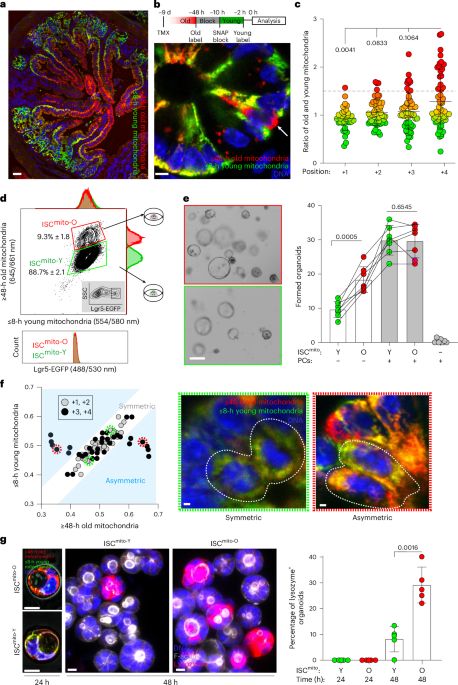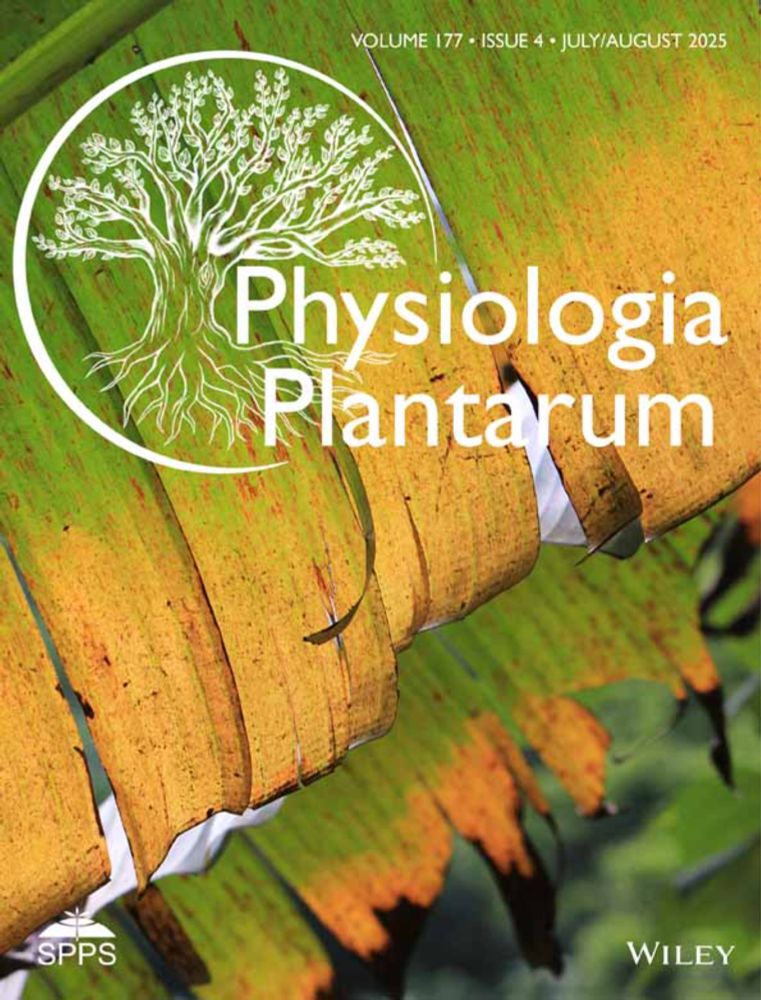🚀 Our new paper is out @natmethods.nature.com!
Kuffer & Marzilli engineered conditionally stable MS2 & PP7 coat proteins (dMCP & dPCP) that degrade unless bound to RNA, enabling ultra–low-background, single-mRNA imaging in live cells.
🔗 www.nature.com/articles/s41...
🧬 www.addgene.org/John_Ngo/
22.09.2025 18:27 — 👍 222 🔁 97 💬 6 📌 9
Nice to see a small summary of our research findings in the Plantae Research Weekly! ☺️🌱
13.09.2025 08:34 — 👍 4 🔁 1 💬 0 📌 0

The image shows one straight magenta line and, close to it, another wavy green line.
This might be one of the simplest images I captured, but very fascinating nonetheless, as it shows how tight the cytoplasm in a plant cell is. The cytosol and all other organelles are squished between the plasma membrane (magenta) and the central vacuole (its membrane is green)
#MicroscopyMonday
08.09.2025 16:22 — 👍 117 🔁 30 💬 7 📌 2
Congratulations Anne Marie!!!! 🥳🥳
03.09.2025 16:57 — 👍 0 🔁 0 💬 0 📌 0
I'm happy to share new work in collaboration with Elena Koslover's lab! First author Keaton developed a mathematical framework for diffusion of soluble material through mitochondrial networks. Then, Lewis lab PhD candidate Camryn used live cell imaging to parameterize... 1/3
29.08.2025 14:33 — 👍 13 🔁 6 💬 1 📌 0

Mitochondrial transfer is a fascinating phenomenon where cells shuttle mitos. The therapeutic potential is compelling and observational science is solid but the mechanism is a black box.
Excellent Viewpoint in @naturemetabolism.bsky.social breaks down one of cell biology’s biggest emerging mysteries
29.08.2025 11:00 — 👍 32 🔁 12 💬 2 📌 0

Cytoplasmic inheritance: The transmission of plastid and mitochondrial genomes across cells and generations (Kin Pan Chung) doi.org/10.1093/plph... #PlantScience
17.07.2025 13:05 — 👍 3 🔁 1 💬 0 📌 1
The only meeting I’ve ever been to with a fun fair at night! #brumforever #NGS2025
07.08.2025 09:36 — 👍 3 🔁 0 💬 0 📌 0

It’s been a wonderful meeting so far at #NGS2025 the ECR community is a great place to be right now, and we’ve had some fascinating talks and workshops. Loved presenting my work on mtDNA and mito dynamics #plantscience
06.08.2025 13:42 — 👍 10 🔁 1 💬 0 📌 0
Please RT! Call for Fellows! If you’re a structural biologist and wanting to start your lab by applying for an external Fellowship then we at Imperial may be excited to host you. Synthetic biologists too.. Please submit expression of interest with details below 🙏
www.imperial.ac.uk/media/imperi...
28.07.2025 16:13 — 👍 20 🔁 30 💬 0 📌 1

Got papped yesterday at the @biology.ox.ac.uk research showcase spreading the good word about mitochondrial dynamics! So fun being in the new LaMB building and interacting with psych/bio colleagues 🌱🧠
(You can check out the paper I was soapboxing about here: onlinelibrary.wiley.com/doi/10.1111/...)
24.07.2025 15:46 — 👍 9 🔁 4 💬 0 📌 0
Congrats, Joanna! New article out in collaboration with our Microscopy Core!
15.07.2025 15:34 — 👍 1 🔁 1 💬 0 📌 0

Spatial organization of mitochondrial nucleoids. (A) Human mitochondrial DNA (mtDNA) is a covalently closed, circular DNA molecule composed of heavy (outer) and light (inner) DNA strands. Each strand has its own origin of replication, referred to as OH and OL, respectively. mtDNA contains 16,569 nucleotides and encodes 37 genes, including two rRNAs and 22 tRNAs (designated by letters). These genes are vital for protein synthesis within mitochondria. (B) Left, live-cell microscopy image of MCF7 breast cancer cells stained with Picogreen (DNA, green) and MitoTracker red (mitochondria, red) taken by S.B. of our laboratory. mtDNA nucleoids appear yellow. Right, a schematic diagram shows mtDNA wrapped in nucleoid-associated proteins, which form core and peripheral complexes within the nucleoid. These protein complexes are essential for the replication, transcription, translation and maintenance of mtDNA within mitochondria.
In their Review, Sangheeta Bhattacharjee and Benu Brata Das discuss the roles of topoisomerases in mtDNA maintenance and repair, and highlight their potential as therapeutic targets.
journals.biologists.com/jcs/article/...
15.07.2025 07:54 — 👍 2 🔁 2 💬 1 📌 0

Old mitochondria regulate niche renewal via α-ketoglutarate metabolism in stem cells - Nature Metabolism
Andersson et al. show that intestinal stem cells enriched for old mitochondria are metabolically distinct and have enhanced ability to regenerate the epithelial niche.
Proudly presenting Simon’s @simonsterson.bsky.social paper on asymmetric apportioning of old mitochondria biasing intestinal stem cells for the Paneth cell linage through aKG-dependent metabolism
@naturemetabolism.bsky.social www.nature.com/articles/s42... @helsinki.fi @metastem.bsky.social 🧵1/8
14.07.2025 10:20 — 👍 66 🔁 22 💬 4 📌 3

Frequent fusion and fission of plant mitochondria with unequal nucleoid distribution | PNAS
The balance between mitochondrial fusion and fission influences the reticular shape
of mitochondria in yeasts. Little is known about whether mitoch...
It is wild! It’s hypothesised that this is an outcome of the constant fission/fusion these guys go through- they can share their contents (www.pnas.org/doi/full/10....), so may share proteins/equilibrate upon fusion. As for specific purpose, it’s still hypothetical but….
14.07.2025 20:44 — 👍 1 🔁 0 💬 1 📌 0
Thank you to David Macherel, Jose Gualberto and Hakim Mireau for organizing the 2024 ICPMB meeting and the special issue of Phys. Plant. And to Olivier Keech, Allan Rassumsson and Olivier Van Aken for organizing the 2022 ICPMB meeting where I first met Joanna and the seeds of this work germinated.
14.07.2025 20:24 — 👍 0 🔁 1 💬 0 📌 0
Thanks Sjon!! 😄😊
14.07.2025 19:37 — 👍 1 🔁 0 💬 0 📌 0
Thanks Rory 😄😄😄
14.07.2025 19:34 — 👍 0 🔁 0 💬 0 📌 0
#plantscience
14.07.2025 12:19 — 👍 0 🔁 0 💬 0 📌 0
A huge thank you to @achristensenphd.bsky.social for supporting me and believing in this project, and @AltartouriB from @BiotechUNL (both on X) for help advising and helping the imaging experiments, as well as wonderful undergraduates Maddy and Alora. Feedback/discussions always welcome!!(9/9)
14.07.2025 11:34 — 👍 3 🔁 0 💬 2 📌 0
So, the big question is why do these mitochondria behave differently if they do or do not have mtDNA? Mitochondria may differ in their receptivity to other individuals based on their genome content… we go into much more detail in the discussion, and the debate is still open!(8/9)
14.07.2025 11:34 — 👍 0 🔁 0 💬 1 📌 0

During this work, I developed a ubiquitous, photoconvertible, stable mtDNA marker for plants based on the bacterial H-NS protein, developed in human lines by @mitomorph.bsky.social I hope this tool will be of great help to the plant mitochondrial community!(7/9)
14.07.2025 11:34 — 👍 1 🔁 0 💬 1 📌 0

Do we differences in ‘social’ characteristics, or how well connected different individuals are? Yes! Mitos without mtDNA are less well connected to the rest of the network. (6/9)
14.07.2025 11:34 — 👍 0 🔁 0 💬 1 📌 0
So, do we see differences in physical movement? Yes! (5/9)
14.07.2025 11:34 — 👍 0 🔁 0 💬 1 📌 0

Then we asked, do individuals with mtDNA move/interact differently to those without? This follows our tracking & network analysis I developed during my PhD (pubmed.ncbi.nlm.nih.gov/34015261/) - but now we can build functional data into these networks! (ie,colour code networks by yes/no mtDNA)(4/9)
14.07.2025 11:34 — 👍 0 🔁 0 💬 1 📌 0

We started by characterising exactly how many mitos per cell have mtDNA (not before quantified per cell), using SYBR green as a marker in fixed tissue. (3/9)
14.07.2025 11:34 — 👍 0 🔁 0 💬 2 📌 0
Plant mitochondria are very different from animals/yeast, existing mostly as bacteria-shaped individuals. They have very large genomes, full of non-coding sequences, and fascinatingly, not all mitochondrial carry mtDNA. (2/9)
14.07.2025 11:34 — 👍 0 🔁 0 💬 1 📌 0
Since 1911, we have supported the molecular bioscience community, promoting the sharing of knowledge and enhancing career development.
Discover more about the Society: https://linktr.ee/biochemicalsociety
Still seeking M. Ulder for joint author paper.
Microscopes ✅ cats ✅ combining the two ❌
Lab --> https://www.kcl.ac.uk/research/culley-group
Oxygen, yeast, SynBio and sometimes, plants. Postdoc at Oxford Biology, PhD at Scuola Superiore Sant'Anna.
I also sing and am very fond of my village.
Plant-microbe biologist turned into a human nutritionist. Iron rocks! Fe-ah!
📍IRBV, Montréal. PhD student in plant mechanobiology. Previously Organ Scholar and MPhys at St Edmund Hall Oxford. Microscopy and photography nerd. Enjoy all things nano and baroque.
See my photos at https://www.instagram.com/viraj.alimages
(he/him)
Postdoctoral researcher at CSIC | PhD in Ecology | Ecologist with interest in #communityecology, #ecologicalnetworks, #restoration and on how #globalchange impact #interactions | #seeddispersal
Final year PhD student at University of Birmingham | Working on Septoria tritici Blotch disease | Non-host resistance and proximity labelling in N. benthamiana🧬 🌾🪴.
Plant Biologist in Dublin, Ireland
Ecologist (PhD) | experimental ecology | ecological forecasting | alpine plants | steering committee member @ https://euro-ecoforecast.wordpress.com/
Evo-ecologist (Assoc Prof at UC Berkeley) studying interactions among phages, microbiomes, and plants. Skeets (own view) about science, teaching, social justice, and politics. (profile pic unedited photo by my six-year-old son)
Postdoctoral researcher #unina
Evolutionary ecology | Plant-insect interaction | Local adaptation and early stages of speciation
PhD student at the University of Birmingham, UK. Working on Pseudomonas syringae and Prunus avium interactions in Rob W. Jackson group.
Biologist @thesainsburylab.bsky.social. Currently doing a PhD with @kamounlab.bsky.social
Curious about plant immune receptors, molecular evolution, and other stuff. 🌿💻 #evoMPMI
Find out more here:
amiralito.github.io
Plant Biologist/PhD student at Charles University
Postdoctoral fellow - University of Verona, Department of Biotechnology 🦠🔬🇮🇹#Chlamydomonas #microalgae #imaging #calcium #signalling #photosynthesis
Exploring the breadth and diversity of life on Earth 🌍 Updates on research & teaching at @ox.ac.uk. Merged from Departments of Plant Sciences and Zoology August 2022
www.biology.ox.ac.uk
MSCA Postdoc fellow, Van Breusegem Lab, Oxidative Stress Signalling. VIB-UGent Center for Plant Systems Biology
DPhil Student in Synoxys Lab | Clarendon Scholar | Passionate of evolution and oxygen sensing 🌱
Group leader at the institute of Plant Biochemistry at HHU interested in sugar signalling in plants especially via trehalose 6-phosphate


















